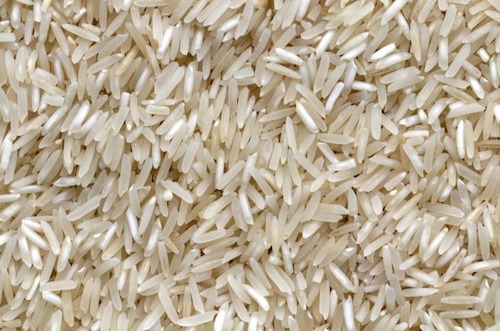
In W21 in the rice landscape, climate change has affected global rice production, prompting the world to find new ways to grow rice. At the same time, rice cultivation is also a major source of greenhouse gasses, and how to continue to produce this critical crop in a sustainable manner has become a major issue and topic of discussion. As the planet heats up, rice farming is facing a crisis, threatening the food and livelihoods of billions of people. In addition to insufficient or excessive rainfall, seawater intrusion can also damage crops, and rising night temperatures furthermore reduce rice yields. India raised its rice production estimate for the 2022/23 season from the previous projection of 130.8MMT to a record 135.5MMT. India banned overseas shipments of broken rice and imposed a 20% duty on exports of various other grades in September 2022, amid concerns over production because of below-average monsoon rainfall in key growing states. The government on May 24th said New Delhi could consider supplying broken rice to other countries only through diplomatic channels. The Indian government's rice procurement from the beginning of the 2022/23 season to May 22nd reached 52.06MMT, benefiting 11.2M farmers with a Minimum Support Price (MSP) of USD 24.608B. FCI expects Indian rice procurement in the 2022/23 season to total 62.6MMT, up compared to the 57.58MMT of rice procured during MY 2021/22. India's 5% broken parboiled variety was unchanged from W20’s price of USD 374-378/MT, with rates pressured in part by the Rupee's depreciation against the US Dollar.
In W21, Vietnamese exported rice prices rose to their highest level since the end of April due to low supply, while rice prices were flat in other major countries on weak overseas demand. Vietnamese 5% broken rice was offered at USD 490-495/MT, up from USD 485-495/MT in W20. Preliminary shipment data showed that 213K MT of Vietnamese rice was due to be loaded at the port of Ho Chi Minh City during the period 1-29 May, with most of the rice destined for the Philippines, Indonesia, and Africa. Vietnam, the world’s third-largest rice exporter, plans to slash its rice exports from 7.1MMT in 2022 to 4MMT by 2030, a sharp drop of 44%. The plan also forecasts that Vietnam’s annual earnings from rice exports will shrink from USD 3.45B in 2022 to USD 2.62B in 2030. The Vietnamese government aims to increase the export of high-quality rice, ensure food safety in Vietnam, protect the environment, and adapt to climate change. Vietnam will also seek to diversify its rice export markets. In 2025, 60% of Vietnam's rice exports are expected to go to Asia, 22% to Africa, 7% to the US, 4% to the Middle East, and 3% to Europe. The Philippines has been the largest buyer of Vietnamese rice for many years, accounting for 45% of Vietnam's rice exports in 2022. Meanwhile, Thailand's 5% broken rice prices were quoted at USD 495-500/MT, down slightly from W20’s price of USD 500/MT, the highest since January. Bangkok-based traders indicated that rice demand was subdued, with the market waiting for the next rice crop harvest for additional supplies.
Historically, Italian rice accounts for almost 60% of EU rice production with the majority of exports destined for the EU, accounting for about 60% of production. But a decline in cultivated areas, climate change, lower profitability, and openness to imports from South East Asian countries risk eroding the leadership of Made in Italy, which is currently firm. The 2022/23 rice campaign is still conditioned by the drought of 2022 and by the negative impact of the Russia-Ukraine war on the commodity agricultural market. But the rains of recent days, in the Italian areas most suited to rice growing and the balance that seems to have returned to the markets leave room for optimism for the near future. However, Italian producers cannot afford to let their guard down to stem Asian threats and negative trends. It is necessary to focus on the strength of typical qualities for risotto and on the selection and enhancement of new and existing rice varieties that have greater quality and richness from a nutritional point of view. Lastly, with the harvest practically over in Brazil, rice producers in Santa Catarina celebrate the increase in prices and exports of the grain. Between January and April of 2023, Santa Catarina exported almost twice the total amount of rice shipped abroad during the whole of 2022, with shipments mainly destined for Venezuela. Rice prices from Santa Catarina continue to rise, driven not only by increased sales abroad but also by the possibility of problems in the Rio Grande do Sul harvest. Rice growers in Santa Catarina have already harvested 99.9% of the sown area in the state, leaving only the ratoon crop.